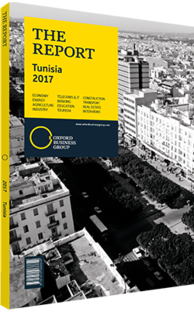Banking
The Company
Created in 1976, Banque Internationale Arabe de Tunisie (BIAT) is the undisputed leader of the Tunisian banking sector. It is owned by private Tunisian industrials, which hold 60% of its share capital, led by the Mabrouk Group holding with an equity stake of 39%. With total assets of TD10bn (€4.3bn), the bank is among the most influential financial institutions in North Africa.
Despite the hostile environment for the banking sector, which has in recent times seen sluggish growth, a liquidity crunch and the introduction of stricter prudential rules, BIAT has been growing its activity at a sustainable pace, while improving its fundamentals. Today it is the country’s top collector, its first credit provider and the market leader in terms of net banking income (NBI).
Since the late 1990s BIAT has been committed to a proximity strategy that has prompted rapid expansion of its network, which is today 200 branches strong. This strategy has resulted in average annual deposit growth of 9% over the last five years, a higher rate than its competitors, with the average growth rate for the sector at 6.6%.
Collections have been mainly fed by sight deposits, which account for half of total deposits. This strategy allowed BIAT to maintain the lowest cost of resources in the sector (2.3% versus an average sectoral rate of 3.7%). Deposits were expected to stand at TD8.7bn (€3.7bn) at the end of 2016.
Despite the depressed investment mood prevailing in Tunisia, BIAT has continued to grow its lending business, with average per annum growth of 8% over the last five years. This pace has not weakened the financing structure of the bank or its portfolio quality. With a very solid deposits-to-credits ratio (123% at the end of 2015) and a healthy loans portfolio – including a non-performing loans (NPL) rate of 7.2%, which is the lowest in the sector – BIAT remains the reference point in the Tunisian banking industry.
As far as forecasts are concerned, we expect growth to remain robust, counting on an 8% increase in loans outstanding to TD7bn (€3bn) in 2016.
Since its creation BIAT has maintained the same strategy: collect cheap deposits, charge high commissions reflecting the strong standard of service and manage the investment portfolio dynamically. This strategy has led to average growth of 12% over the last five years, performance that has been supported by an interest margin which accounts for the bulk of BIAT’s revenues (53%).
In this regard BIAT has the highest interest spread in the Tunisian banking industry at 4.4%, versus a sector average of 2.5%. Based on our estimates, we expect BIAT to hit a new record in terms of NBI, at TD591m (€253.5m), in 2016.
The sound standing of its NBI has allowed BIAT to progressively reduce its operating ratio, which dropped from 59% in 2011 to 50% in 2015.
It also permitted the bank to enhance its coverage efforts, with an average provision of TD63m (€27m) during the last five years, and reaching an NPL coverage ratio of 76% in 2015.
Thanks to its capacity to boost its NBI and control its risks, BIAT showed a strong and recurring earnings capacity. We estimate that net profit ex-minorities will amount to some TD157m (€67.3m) in 2016, a 7% increase over the previous year.
Outlook
A key player in the traditional lending business, BIAT is moving into new and more profitable activities, such as investment banking and wealth management. Success in these could give new impetus to BIAT and to the whole banking sector.
BIAT has recorded a rise of 23% since the start of 2017, propelling it to first place in the sector in terms of market capitalisation (TD1.5bn, €643.3m). The valuation multiples of the bank are also still attractive, with an expected price-to earning ratio of 9.7x and a price-to-book ratio of 1.8x in 2016.
You have reached the limit of premium articles you can view for free.
Choose from the options below to purchase print or digital editions of our Reports. You can also purchase a website subscription giving you unlimited access to all of our Reports online for 12 months.
If you have already purchased this Report or have a website subscription, please login to continue.

